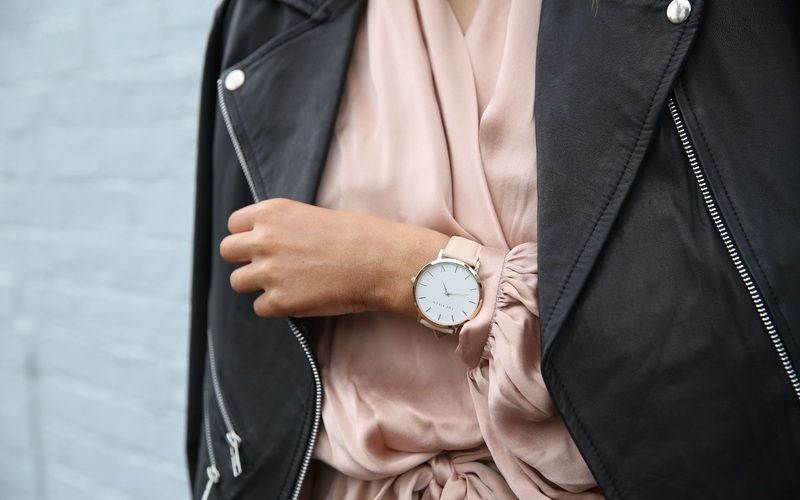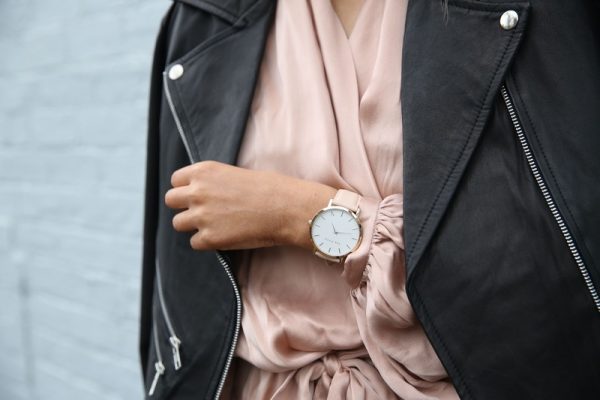Less is more with a minimalist style.
The basic style rids unnecessary decorations and ornamentation to allow neutral colors, quality of your fabrics and simple cuts to stand out.
A minimalist woman is simple and chooses simplicity, atop being timeless, elegant and sober. And, her sense of fashion and style is no different.
The minimalist style dates back to the 90s when new and clean aesthetics emerged as an alternative to the trends and top shapes, excesses and eccentric natures of other fashion styles.
A basic and minimalist styles focuses on our fabrics’:
- Proportions
- Geometric lines
- Simplicity and purity
- Balanced silhouettes
- Simple cuts.
Minimalist fashion designs started to emerge as early as the 80s in the works of Rei Kawakubo and Yohi Yamamoto, Japanese designers. The designers preferred garment deconstruction, completely black looks and emphasis on an oversized silhouette to other fashion styles.
The designers brought the traditional Japanese beauty concept to life through unabashed simplicity and line purity, important elements of their conventional outfits.
European designers such as Jil Sander, Helmut Lang and Martin Margiela also contributed to the natural, timeless and sophisticated look of the minimalist woman. They used innovative materials and amazing cuts to bring out the basic, minimalist style.
Donna Karan and Calvin Klein took the beauty of the fashion style to another level.
What is the Minimalist Style Like?
A cosmopolitan woman into minimalism aims for both practicality and functionality with added sophistication. In the 90s, women in New York wore trainers to the office and changed to stilettos prior to entering the workplace for an impeccable look.
The woman also matched oversized and asymmetric cuts and jackets (masculine suits) with amazing clean skirts, dresses or jeans to adorn the minimalist look. Important features of fabric quality and cuts in a basic style include:
- Garment movement
- Pure lines
- Proportion and volume
- Texture combinations
- Color
- A mix of cashmere, organza or silk with denim, cotton or innovative synthetic fabrics strikes a perfect balance between elegance and functionality. The mix gives quality fabrics.
“Basic” pieces in a minimalist style mean reducing your wardrobe to a few pieces of basic clothing items you can wear in a season or a period of 3 months. It helps reduce the money, time and energy that goes into dressing each day.
A few clothes in basic cuts and colors can help achieve your fashion goals because less is more. Opt for a personal color palette instead of neutrals such as whites, blacks and grays.
The few, basic pieces are the items in your wardrobe that you like and interact with each other, for a harmonized look. They also help you create a set of outfit for a typical day.
Pros and Cons of Creating a Basic/Minimalist Style Wardrobe
Also known as capsule wardrobes, a basic or minimalist style wardrobe involves purging your closet and your entire home to simplify your life. De-cluttering your closet saves on money and time.
Pros of a Minimalist Style
Some benefits or advantages of a basic, minimalist fashion style include:
- Less time spent deciding on what to wear. With fewer clothing pieces in your wardrobe, you take less time going through your clothes to pick something to wear. This saves you stress and time because you’re able to choose what to wear within a short time.
Additionally, the fewer pieces mean you know everything in your wardrobe. Dressing is easier because you can pick an outfit in seconds and everything in your closet work well together. Fewer choices of clothes in the morning also reduces the time taken to choose what to wear.
- The few clothes in your closet give you more timeless pieces you can wear at any time to any occasion. You can wear them for a long time without going out of your simple yet sophisticated style.
- You spend less money on ‘trendy’ pieces you may only wear a few times. A minimalist style allows you to spend on clothes you’ll wear several times until you decide to change your wardrobe.
You don’t have to spend on trendy items as they come out because you have to wear your few pieces a specific number of times. For instance, you may decide to use your clothing pieces 50 or 150 times before you can replace them with newer items.
- With reduced spending, you can expect to save more money long term. This leaves you with more money to spend on quality pieces rather than trying to keep up with the latest passing trends.
- A basic or minimalist style is a more environmentally-friendly approach because of not consuming/wasting as much as in other styles. This style consumes fabrics fully and results in less waste, making it eco-friendly.
- Your perfectly-fitted wardrobe ensures that you always have something to wear because the few pieces create a perfect outfit easily and quickly. Knowing that you look great improves your self-confidence and general wellbeing.
- Minimalist style gives you more closet space and a Pinterest-like wardrobe that looks organized and amazing.
- You get an opportunity to be creative with your outfit each passing day because they’re only a few pieces. This is great if your personal style doesn’t change much.
- Knowledge and better understanding of the colors in your closet makes it easier to know what colors to pick when you go shopping.
- It’s a great way to curb your impulse spending habits.
Cons of a Minimalist Style
There’re also a number of cons to the basic fashion style. It isn’t for everyone, especially if:
- You may enjoy the creativity of styling and piecing together outfits, something that’s limited with minimalism. It doesn’t allow you to experiment with your style daily and enjoying the fun part of getting dressed.
- You LOVE shopping and fashion, and minimalism isn’t for you.
- You love expressing yourself through color and patterns that may not fit into a more basic style.
- You enjoy passing on your clothes to friends, donating, or reselling your old garments.
- You don’t mind spending money on fashion, even if you only wear them once.
Other cons of minimalism include:
- You’re likely to end up with more pieces of clothes if you change your closet every season.
- Repeating the same outfits is likely to get boring and tiresome, hence the need to find interesting ways to style your outfits.
- The small wardrobe size may limit your job if you work in a corporate job.
- The style may not be suitable for regions that experience seasonal changes and you’ll wash your clothes more often.
- Lack of proper planning when picking clothing pieces for your minimalist wardrobe can create a gap in your capsule. And, it’s a big deal if you grow out of an outfit because each piece in your minimalist closet is important.
Conclusion
Figure out your reason for picking a minimalist style to help you choose a perfect basic wardrobe for you. Choose the number of tops, pants, skirts and other basic pieces you feel is enough for your unique needs.
Before creating a capsule or minimalist wardrobe, consider its various pros and cons to determine if it’ll work for you. Let your style guide you.






















